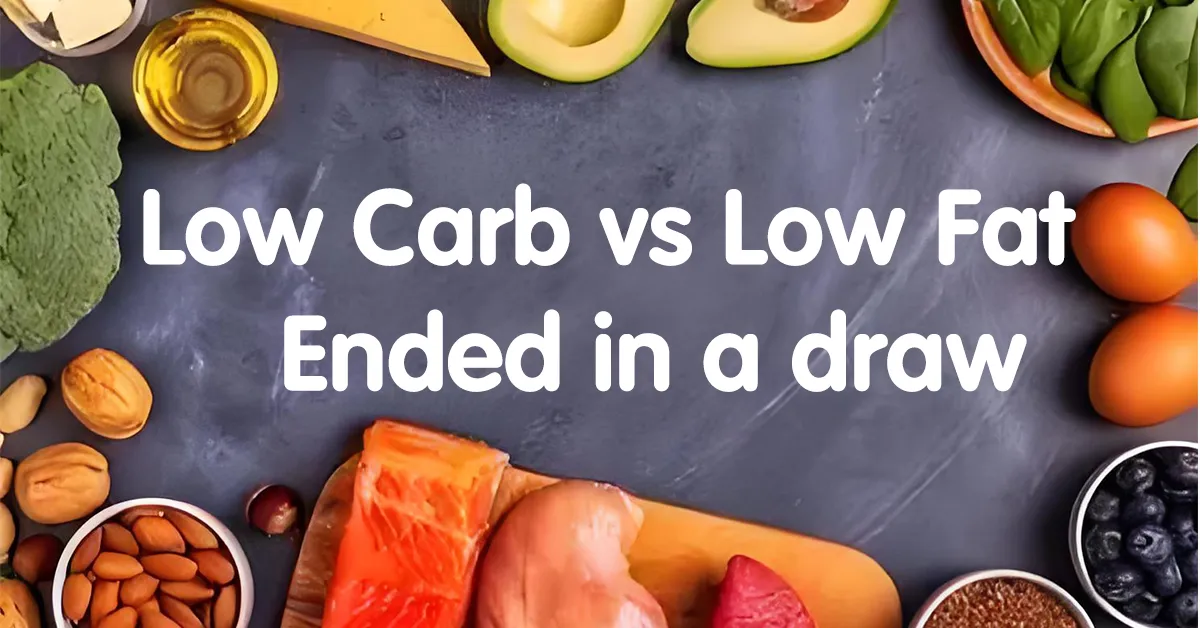At the supermarket shelves, consumers repeatedly compare the nutritional labels of whole milk and low fat milk. At the gym, fitness enthusiasts debate whether or not to eat a spoonful of oats after working out. The clash between low carb and low fat diets—the two major nutritional camps—has become the eternal battlefield for modern people pursuing a healthy weight.
But when we cut through the marketing hype and examine the scientific evidence, we find that this seemingly adversarial battle ultimately ended in a surprising draw.
1. Low carb diet: a double-edged sword for burning fat
Core principle: By strictly limiting carbohydrates (typically less than 50-100 grams per day), the body is forced to switch from burning glucose to breaking down fat for energy, entering a state of “ketosis”.

Metabolic characteristics:
- Rapid reduction in blood sugar and insulin levels.
- The liver converts fatty acids into ketone bodies for energy.
- Significant weight loss in the initial stage due to water loss.
Key Advantages:
- Rapid Short-Term Weight Loss: A study by the Sixth Research Institute of Shanghai Jiao Tong University found that after following a diet with less than 50g of carbohydrates per day for three weeks, participants lost an average of 3.56 kilograms, which is nearly three times the effect of the exercise group.
Effective for Blood Sugar Control: For patients with type 2 diabetes, HbA1c (glycated hemoglobin) and fasting insulin levels were significantly reduced within three months.
Natural Appetite Suppression: A high-protein, high-fat diet increases feelings of fullness and reduces calorie intake.
Potential risks:
- Initial “low-carbon flu”: Approximately 30% of participants experience constipation, fatigue, headaches, nausea, and bad breath (ketone odor).
- Risk of nutritional imbalance: Long-term lack of whole grains and fruits may lead to dietary fiber and B vitamin deficiencies.
- Cardiovascular concerns: Some people experience elevated low-density lipoprotein (bad cholesterol) levels.
In 2013, China’s first ketogenic clinical study showed that heavier individuals on an extremely low carb diet (800 kcal/day) for eight weeks lost an average of 8.7 kilograms. Still, seven participants withdrew from the trial due to stomach pain or difficulty adhering to the diet. This highlights the dual nature of the diet, which offers both benefits and challenges.
2. Low fat diet: The light and shadow of traditional wisdom
Core principle: Reduce daily fat intake to less than 50 grams (standard diet is about 70 grams), with priority given to reducing saturated fat.

Practical characteristics:
- Based on grains, fruits, and vegetables.
- Choose skimmed dairy products and lean meat.
- Avoid fried and high-fat processed foods.
Health benefits:
- Heart protection: Continued reduction in total cholesterol and low density lipoprotein, lowering the risk of cardiovascular disease.
- Steady weight loss: Natural control of total intake by reducing calorie density (fat 9kcal/g > carbohydrates 4kcal/g).
- High sustainability: No need to strictly avoid staple foods, low threshold for implementation.
Nutritional pitfalls:
- Trace element deficiency: Prone to deficiency in fat-soluble vitamins (A, D, E, K) and essential fatty acids.
- Hidden sugar traps: To improve taste, products such as low fat yogurt often contain large amounts of added sugar.
- Metal element loss: Clinical studies have found that people who consume a low fat diet over a long period are at increased risk of iron and zinc deficiency.
When menopausal women adopt a low fat diet without supplementing with nuts and beans, they may accelerate osteoporosis due to insufficient calcium absorption. This explains why groups such as adolescents and pregnant people are explicitly advised to use this diet with caution.
3. The Endgame of Weight Loss
When we turn our attention to the long-term weight loss battlefield, the differences between the two dietary systems miraculously disappear.

Time evens out the gap
A meta-analysis of 1,391 people published in the British journal Nutrients revealed that:
- Short term (3 months): The low carb group lost an average of 2.1 kilograms more.
- Long term (24 months): The weight loss difference between the two groups narrowed to 0.3 kilograms, which was not statistically significant.
Metabolic improvement equivalence
A comparison of the effects of low carb vs low fat diets on heavier and diabetic individuals found that:
- The decrease in triglycerides was similar.
- The improvement in insulin sensitivity was comparable.
- There was no significant difference in the effect on blood pressure reduction.
Individual genes determine success or failure
In 2019, Huzhou University divided 53 Chinese women into groups:
- The ketogenic diet group showed a significant reduction in waist circumference.
- However, the exercise group did not show any additional weight loss benefits.
Key finding: Individuals with multiple copies of the AMY1 gene (salivary amylase gene) respond better to low carb diets—this explains why some people lose weight even when eating steamed buns, while others remain a higher person even when avoiding sugar.
Table: Comparison of long-term effects of two major dietary systems
| Evaluation Dimensions | Low-carb diet | Low-fat diet |
| 1-year weight loss | -6.0kg | -5.3kg |
| Diabetes control target rate | 58% | 52% |
| Dropout rate (adherence) | 29% | 22% |
| Muscle retention rate | 84% | 79% |
4. Transcending Opposites: The Golden Rule of Smart Eating
When scientific evidence dispels the dichotomy of either/or, we are presented with more freedom in our nutritional choices:
“Metabolic trait” matching method
Mediterranean compromise plan
The compromise camp shows remarkable vitality:
- Choose low GI carbohydrates: oats and black rice account for 1/3 of staple foods.
Choose high-quality fats: olive oil, nuts, and deep-sea fish.
Balance protein: alternate between poultry and beans.
The First Law of Sustainability
Professor Yin Jun of Shanghai Sixth People’s Hospital pointed out, “The ketogenic diet is a revolutionary and correct model, but it must be professionally guided.” Whether you choose carbohydrates or fats as your energy source, only a diet that can be integrated into your daily life can bring lifelong weight management success.
This decades-long debate in nutrition science was ultimately settled by data—Low carb vs Low fat diets differ by less than 1 kilogram in long-term weight loss effectiveness.
As the editor of the Journal of the American Medical Association (JAMA) said, “Arguing about which diet is best is like arguing about which exercise is best; the answer is always ‘the one you can stick with.'”
The true path to health lies not in extreme restrictions, but in listening to the wisdom of your body: a balanced, diverse, and sustainable diet, complemented by an active lifestyle, is the eternal compass that guides you through the fog of nutrition science.






